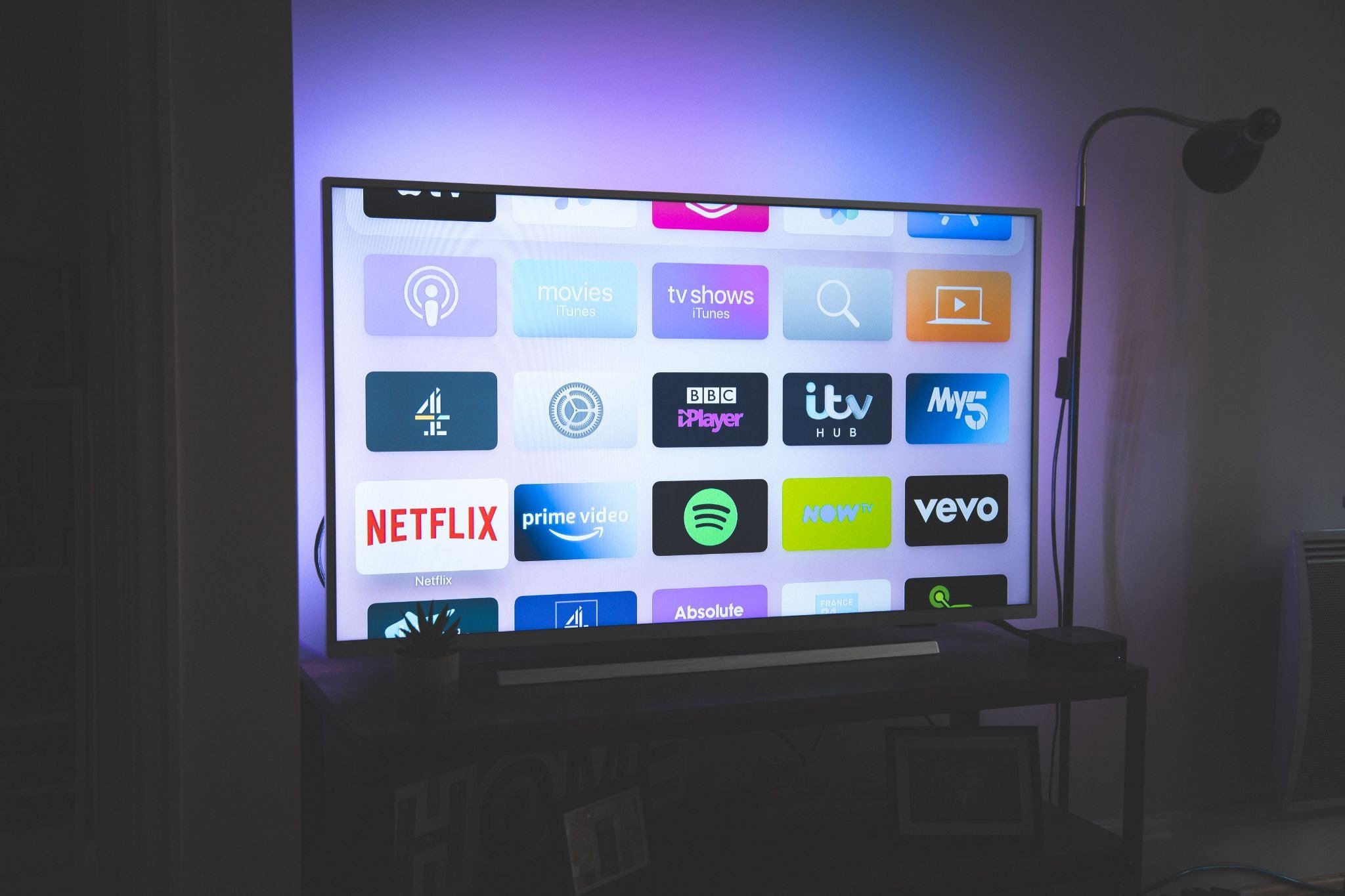Learn more about why OTT is becoming one of the most critical channels for advertisers focused on growth and performance.
OTT advertising is democratizing marketing. Here’s why you should pay attention.
The ways consumers engage with television have changed with the rise of the internet, as over-the-top (OTT) content delivery becomes more common than linear television subscriptions. With these changes, advertisers can now try new forms of advertising, turning to platforms that can take an individual household’s wants and needs into account. The rise of OTT content has propelled OTT video advertising to new heights. But what is OTT advertising, and how does it work? Here’s everything you need to know about it and how it can help you better engage your target audience.
What Is OTT Video Advertising?
OTT advertising refers to ads placed on over-the-top content, which exists outside of the cable and satellite television ecosystem and, more narrowly, on connected TV (CTV) devices like Roku or Sling. At its core, OTT video advertising matches the right ads with the right customers, taking a suite of data into account to help narrow in on specific demographics that best fit a business’ target audience. More broadly, OTT advertising is about the democratization of marketing, allowing smaller companies to take the spotlight over goliaths like Coca-Cola and McDonald’s thanks to lower rates.
How OTT Advertising Targeting Lowers Costs
OTT advertising’s ability to target specific audiences is a large part of what makes it stand out from traditional advertising, taking into account a wide range of data to connect with audiences and keeping marketers from yelling into the void. While this data set is broad, some of the specifics include:
- Online behaviors
- Offline behaviors
- Interests
- Demographics
- Custom segments
Advertisers want to partner with platforms that have access to as much data as possible to be effective, as it ensures that the right audience will be exposed to their ads. OTT programmatic advertising does just that by analyzing data and sending out ads to matching consumers, but more on that later.
As a bonus, OTT advertising is far less expensive than traditional TV ads, which charge massive sums for airtime that may be put in front of a disinterested audience. OTT advertising doesn’t have a set price, but it uses methods that are more in line with digital advertising. For instance, CPM (Cost Per Mille) is typical on OTT advertising platforms, tracking how many impressions an advertiser receives and charging accordingly. There’s also CTV advertising, which narrows in on an even more engaged OTT audience and allows paying based on CPA or CPI, rather than by impressions, stretching ad budgets even further.
If you have more questions about OTT advertising targeting and pricing, check out OTT Media Buying: A Complete Guide for Digital Marketers.
What Are The Differences Between OTT and VOD Ads
OTT and video-on-demand (VOD) advertising have some overlap but they are not identical, although the terms are sometimes used interchangeably. OTT advertising completely circumvents traditional linear television, whereas VOD might also be available through linear services like cable or satellite. Broadly speaking, OTT refers to the way the content is distributed while VOD is a descriptor of how it is consumed.
VOD has three forms:
- SVOD: SVOD is subscription-based, charging users a flat rate to access a content catalog. Netflix is a shining example of how SVOD functions.
- TVOD: TVOD is a transactional format, like pay-per-view, where consumers are charged for access to a piece of content. It’s common for sporting events like UFC fights.
- AVOD: AVOD is ad-supported, granting users free access to content but running ads to churn a profit. Crackle is perhaps the most well-known example of an AVOD platform.
Most of the overlap between OTT and VOD comes from Netflix, Hulu, Amazon Prime, and similar services played through TV glass. OTT advertising and VOD advertising distinctions can seem minor, but they are also essential. OTT content delivery methods are what make advertising on OTT content valuable. It allows advertisers to deliver user-specific ad content to their target audience while they are actively engaged and relaxed rather than showing broad audiences the same set of ads as linear television does.
Successful OTT channels will merge several payment structures to ensure that they appeal to as broad of an audience as possible. Hulu, for instance, allows users to choose between different price points to determine whether or not they’ll see ads, and it offers premium channel subscriptions like HBO and Showtime. Meanwhile, Amazon Prime does much of the same while letting users access pay-per-view content like movie rentals.
To learn more about the distinguishing factors of OTT and VOD ads, check out OTT vs. VOD — Understanding Streaming & On-Demand Models.
OTT Video Advertising: Costs and Audiences
Historically, television has been a broad reach advertisement platform, which means that ads are deployed to anyone regardless of their specific demographic, interests, and behaviors. It’s costly, inefficient, and difficult to tell if those traditional ads left enough of an impression to motivate a desired behavior from consumers. With the rise of streaming services, more efficient and cost-effective advertising methods have emerged, namely OTT programmatic advertising.
Basic programmatic advertising helps marketers connect with their audiences through automated bidding software. Artificial intelligence and machine learning use information from data collection tools to help narrow in on ideal consumers, determining relevance and matching them with specific ads.
OTT programmatic advertising combines OTT advertising and programmatic ads, creating faster transactions for advertisers and better performance metrics and results, such as increased impressions and a better return on ad spend (ROAS).
To learn more about how you can cut costs and improve ad performance, check out OTT Programmatic Advertising — Understanding the Democratization of TV
OTT Statistics Reveal a Path to Success
OTT content has become common in homes all over the US; 78% of US households subscribe to at least one SVOD service. As time presses on, more people are ditching cable and satellite in favor of streaming OTT content through CTVs and OTT devices. OTT content is the future, with OTT advertising spending reaching $1.3 billion in 2021. OTT video advertising shows no indication of slowing down as this digital shift continues, either. Advertisers need to meet consumers where they are, and they’re increasingly spending time on OTT video platforms.
The shift to OTT advertising focus is positive for advertisers, as OTT video advertising allows for attribution that linear TV simply can’t provide. Plus, studies show that most consumers are okay with ad-driven platforms versus paid ad-free subscriptions, especially when the ads are tailored to their personal interests.
For more on how OTT is changing the advertising landscape, check out 12 OTT Statistics That Reveal the Future of Streaming Media.
OTT Advertising Provides 1:1 Attribution
Of course, there’s no point in spending money on advertising if it isn’t clear whether or not those ads are effective in the first place. That’s long been a problem for advertisers on linear subscription services, where it can be hard to gauge an ad’s effectiveness solely on how many people saw it. Luckily, OTT video advertising platforms have solutions to track a range of key performance indicators.
tvScientific provides precise attribution by delivering an ad to a matching consumer watching OTT content. We then identify its IP address and store that information in an exposure file. If a device connected to the stored IP address performs a desired action, like making a purchase or signing up for an email newsletter, we collect that data and report it. Without that OTT attribution data, the action would be attributed to Google rather than giving your business the ad credit. tvScientific’s attribution method eliminates the uncertainty when determining whether new customers are coming from Google, an OTT advertising campaign, or any other way, helping advertisers optimize their ad strategies.
To learn more about OTT ad attribution and tvScientific, check out OTT Attribution — How TV for Brands is Changing.
OTT platforms will only grow, and OTT video advertising will grow along with it. It’s the logical next step in content delivery, and advertisers must adapt to the changes. The positive is that platforms like tvScientific make it easy for advertisers to make the changes they need, helping them grow their business while creating a better experience for consumers. Learn more right now by downloading our free ebook:






%20Need%20to%20Know.jpeg)

